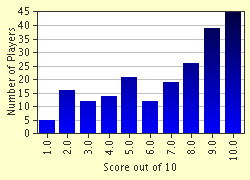Quiz Answer Key and Fun Facts
1. Around 863, two missionaries brought the Christian faith to the lands known as Moravia and later moved on to Bohemia, too. Who were they?
2. In the tenth century, an enlightened ruler who was later killed by his brother, came to the throne. He would become the patron saint of Bohemia. Who was this king?
3. After ruling for 400 years, which family became extinct when the last male was murdered in 1306?
4. During Charles IV's reign (1346-1378), Prague became a key center of the Holy Roman Empire. This period was known as _______?
5. Charles IV, a great builder and urban planner, transformed Prague into a magnificent city of 50,000 inhabitants which included:
6. The Golden Bull of 1356 gave Bohemia a special status. What was it?
7. In 1414, a national movement, inspired by a popular teacher and preacher who was burned at the stake for his views, began over two hundred years of civil wars and unrest in the country. Who was this man?
8. In the 15th century about two-thirds of the population of Bohemia was opposed to many aspects of Catholicism and, as a result, found itself fighting against the rulers. These protestors were known as ________ ?
9. This eccentric, 16th century Habsburg ruler 16th was the last to make Prague his permanent residence. He was an art collector and patron to writers and scientists. He showed religious toleration to all groups.
10. On November 8, 1620, the Protestants were soundly defeated in this battle and 27 Czech nobles were executed in Prague's Old Town Square, their severed heads displayed to the populace.
Source: Author
spudhead
This quiz was reviewed by FunTrivia editor
bloomsby before going online.
Any errors found in FunTrivia content are routinely corrected through our feedback system.

